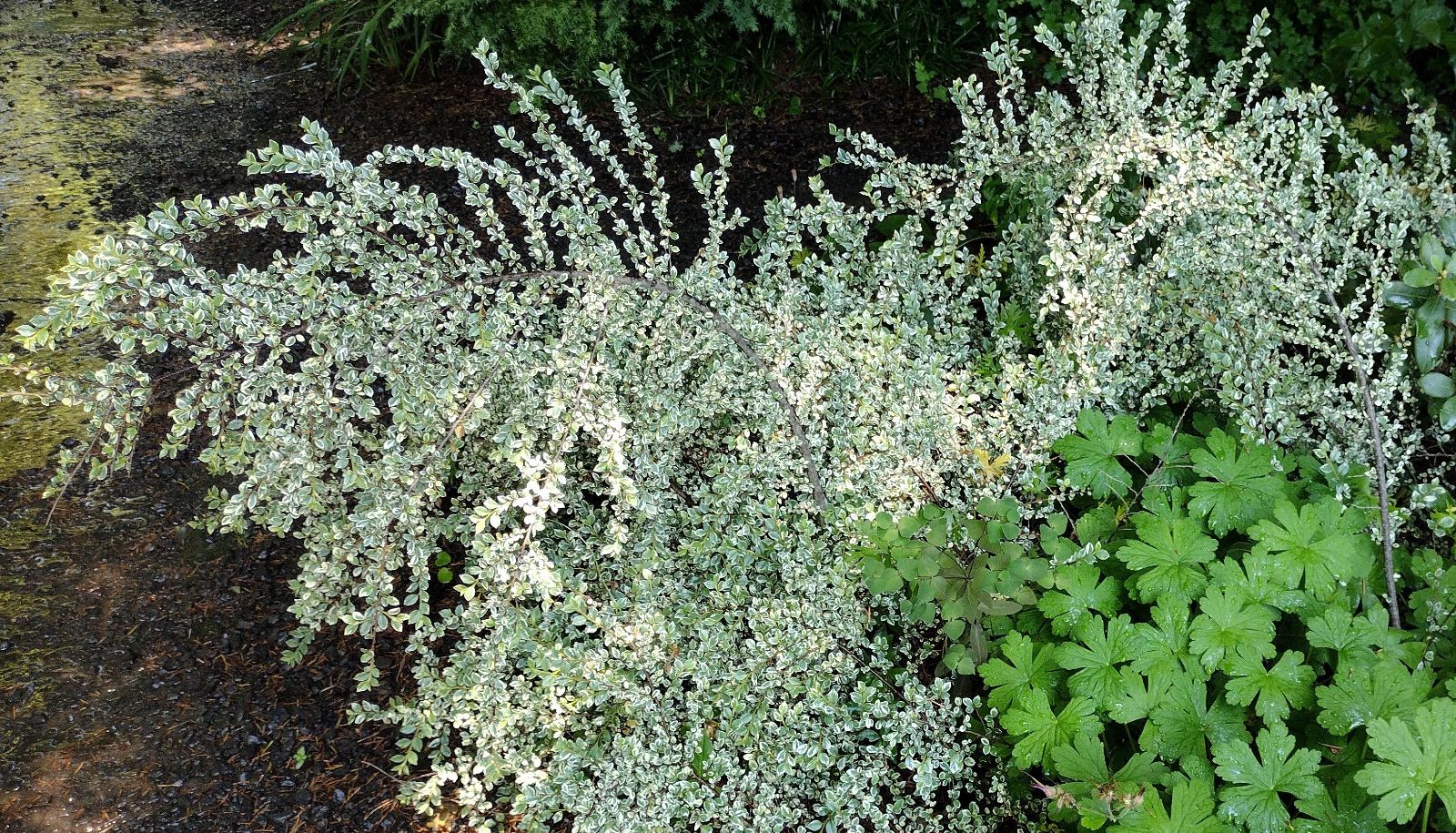Cotoneaster horizontalis
Credits
Article from Bean's Trees and Shrubs Hardy in the British Isles
Recommended citation
'Cotoneaster horizontalis' from the website Trees and Shrubs Online (treesandshrubsonline.
Genus
Infraspecifics
Other taxa in genus
- Cotoneaster acuminatus
- Cotoneaster acutifolius
- Cotoneaster adpressus
- Cotoneaster affinis
- Cotoneaster ambiguus
- Cotoneaster amoenus
- Cotoneaster apiculatus
- Cotoneaster bullatus
- Cotoneaster buxifolius
- Cotoneaster congestus
- Cotoneaster conspicuus
- Cotoneaster cooperi
- Cotoneaster dammeri
- Cotoneaster dielsianus
- Cotoneaster distichus
- Cotoneaster divaricatus
- Cotoneaster foveolatus
- Cotoneaster franchetii
- Cotoneaster frigidus
- Cotoneaster glabratus
- Cotoneaster glaucophyllus
- Cotoneaster harrovianus
- Cotoneaster hebephyllus
- Cotoneaster henryanus
- Cotoneaster hupehensis
- Cotoneaster integerrimus
- Cotoneaster lacteus
- Cotoneaster lindleyi
- Cotoneaster lucidus
- Cotoneaster melanocarpus
- Cotoneaster microphyllus
- Cotoneaster moupinensis
- Cotoneaster multiflorus
- Cotoneaster nitens
- Cotoneaster nitidifolius
- Cotoneaster obscurus
- Cotoneaster pannosus
- Cotoneaster prostratus
- Cotoneaster racemiflorus
- Cotoneaster rhytidophyllus
- Cotoneaster rotundifolius
- Cotoneaster rubens
- Cotoneaster salicifolius
- Cotoneaster simonsii
- Cotoneaster tomentosus
- Cotoneaster turbinatus
- Cotoneaster uniflorus
- Cotoneaster zabelii
A deciduous shrub of low, flat habit, rarely more than 2 or 3 ft high in the open, the branches spreading quite horizontally, and increasing but slowly in height; branchlets covered with a thick brown wool, and produced in two opposite rows. Leaves roundish or broadly oval, from 1⁄4 to 1⁄2 in. long, three-fourths as wide, shortly and abruptly pointed; dark glossy green above, glabrous, or with a few scattered hairs beneath. Flowers white, suffused with pink, about 1⁄4 in. diameter, produced during May singly, or in pairs on short leafy twigs springing from the buds of the previous summer’s wood; calyx woolly. Fruit globose, bright red, about 1⁄5 in. diameter, nutlets three.
Native of China; described from plants in the garden of the Paris Museum, raised from seed sent by the missionary Père David around 1870 and put into commerce in France in 1885. This is decidedly one of the prettiest and most distinct of cotoneasters. Its most striking characteristic is the opposite branching and low, horizontal habit. The leaves, although small, are so abundant as to be almost without intervening spaces; they remain long on the branches, and the shrub is often in full leaf in November. Then the lower ones of each shoot begin to fade off into various shades of orange and red, whilst the terminal part retains them green. By January the shrub, as a rule, has lost all its foliage, and its bare branches present a curious fish-bone-like appearance. The fruits are very bright, and often abundant, although smaller than in most of the species. In the open ground, where it has plenty of space to develop, this cotoneaster keeps low and flat, but it will grow much higher against a wall. In such a position there is a plant at Kew 10 ft high spreading over the wall, but keeping from actual contact with it. Increased easily by cuttings.
From the Supplement (Vol. V)
cv.’ Variegatus’. – An attractive feature of this cultivar, not noted in the original printing, is that the leaves turn pink in the autumn.
C (horizontalis × salicifolius var.
Synonyms
floccosus ) 'Gracia' and 'Valkenburg'
C 'Sabrina'
This cotoneaster arose as a self-sown seedling in the garden of N. G. Hadden, Porlock, and was given an Award of Merit in 1950. It appeared between two cotoneasters, of which one was C. horizontalis; the other was grown as “C. pannosus” but subsequently proved to be C. franchetii (P. F. Yeo in Gard. Chron., April 21, 1962). In their account of C. splendens (see above) the authors remark that, judging from a herbarium specimen of Mr Hadden’s plant, ‘Sabrina’ would appear to be identical with C. splendens and contend that it must have been raised from seed of this species, which has been in cultivation in a number of Scandinavian botanical gardens for some thirty years. This is both interesting and puzzling, since Mr Hadden assures us that his plant was, as stated, self-sown and in his opinion a hybrid between C. horizontalis and C. franchetii. Seedlings of C. splendens and ‘Sabrina’ are in cultivation in the University Botanic Garden, Cambridge. Dr Yeo tells us that the ‘Sabrina’ seedlings are uniform and seem to the eye to be very similar to those of C. splendens, though they are tending to produce ‘herring-bone’ branching, whereas C. splendens has the branches decussate. Until these plants come to maturity the question of the taxonomic position of ‘Sabrina’ (and of C. splendens) is best left in abeyance.C splendens Flinck & Hylmö
This species, described in 1964, was discovered and introduced to Sweden in 1934 by the Swedish botanist Dr Harry Smith from the region of Tatsien-lu (now called Kangting). It is described as an apomictic species allied to C. dielsianus, but differing in its lower growth, in its thinner, broadly ovate-elliptical to almost orbicular leaves with less impressed veins, and in its larger, lustrous, bright orange-red fruits. See also ‘Sabrina’.'Saxatilis
Dwarfer than the type, with the ‘fish-bone’ habit of branching very well marked; it is also more prostrate and the leaves are smaller. Suitable for the rock garden but shy-fruiting. It was put into commerce by Messrs Hesse of Germany in 1950.var. perpusillus Schneid.
Synonyms
C. perpusillus (Schneid.) Flinck & Hylmö
'Variegatus'
Leaves edged with white. This is one of the most dainty of variegated shrubs. The low, flat, spreading nature of the growth shows up the variegation very effectively.In his valuable survey of dwarf cotoneasters (Dendroflora, No. 3, 1966) H. J. Grootendorst also describes ‘Robusta’, a vigorous and free-fruiting form whose leaves colour well before falling. Put into commerce by Messrs Van Nes in 1954.

